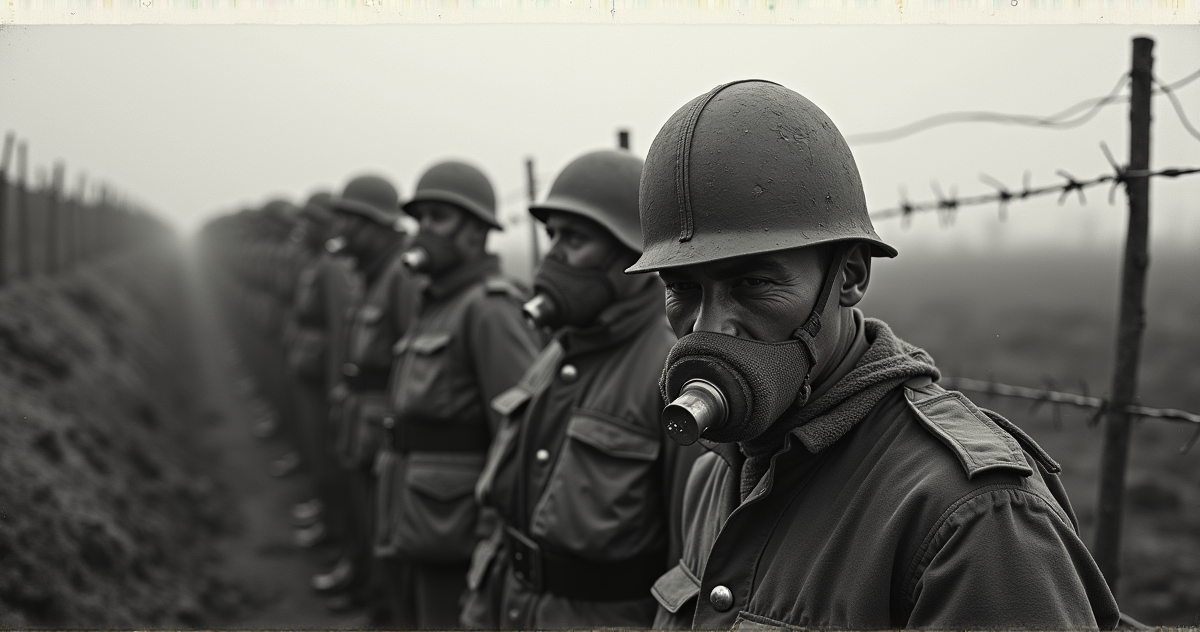Have you ever heard a story that just… stuck with you? A tale of sheer grit and unbelievable courage in the face of impossible odds? I recently stumbled upon the story of the Osovets Fortress, and honestly, it’s been circling in my head ever since. It happened during World War I, and it’s a powerful reminder of what people are capable of enduring.
What Was Osovets Fortress & Why Did It Matter?
Osovets Fortress (also spelled Osowiec) wasn’t some glamorous castle. It was a series of fortifications on the Eastern Front, and its location was strategically vital. Basically, it stood in the way of a German advance. During the war, it was besieged four times. But one attack, in August 1915, stands out as particularly brutal – and the defense? Absolutely legendary.
The Eastern Front during WWI was a particularly nasty place. Huge armies, terrible conditions, and a willingness to try out new, terrifying technologies. That brings us to the main event…
A Wall of Gas: The August 4th Attack
The Germans were confident. They expected a quick win. They’d prepared a massive gas attack, releasing an unimaginable amount of chlorine and other poisonous gases toward the fortress. And they weren’t just preparing for a battle; they were bringing carts to bury the dead. They genuinely thought the gas would wipe out the defenders.
Think about that for a second. They expected total annihilation.
The attack was a saturation bombing of poison. It wasn’t about precision; it was about overwhelming the defenders with a suffocating, terrifying cloud. The intent wasn’t just physical destruction, but to break the defenders’ will to fight. It was a psychological weapon as much as a physical one.
How Did They Respond? A Counterattack… Into the Gas.
Here’s where the story gets truly unbelievable.
Instead of crumbling, the defenders of Osovets…counterattacked. Into the gas cloud.
Yes, you read that right. Despite being heavily gassed, coughing, blinded, and choking, the soldiers of the Zemlyansky Regiment – supported by artillery – launched a desperate, courageous counteroffensive.
I mean, can you even imagine?
They didn’t have time to fully prepare. They reacted immediately. It was a chaotic, terrifying response, but it was effective. They regained lost ground, recaptured weapons, and disrupted the German advance.
Sub-Lieutenant Strzheminsky became a symbol of this bravery. Severely poisoned himself, he continued to lead the counterattack, commanding his men despite his condition.
It wasn’t just one man or one unit, though. The Zemlyansky Regiment, along with supporting artillery and squadrons, coordinated effectively, even launching bayonet charges to drive back the stunned Germans.
The Germans Were Stunned
The German forces were completely shocked. They had fully expected a swift victory and were met with a furious, determined resistance they hadn’t anticipated. Their carefully planned attack had failed spectacularly.
The siege continued for a bit longer, but the intensity decreased. Eventually, the fortress was evacuated. While a strategic loss, the defense of Osovets became a symbol of incredible resilience.
Why Does This Story Matter?
The story of Osovets Fortress isn’t just a historical footnote. It’s a testament to the human spirit. It demonstrates what people can achieve when facing impossible odds. It reminds us that courage, determination, and effective leadership can overcome even the most terrifying of challenges.
It’s also a sobering reminder of the horrors of early chemical warfare, and the devastating impact of new technologies on the battlefield.
[Image of soldiers in WWI gas masks with alt text: “Soldiers wearing gas masks during World War I, similar to those who defended Osovets Fortress”]
The defense of Osovets Fortress is a story that deserves to be remembered. It’s a story of courage, resilience, and the unwavering spirit of those who fought in the Great War.
